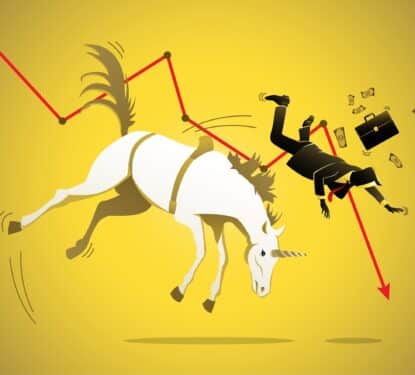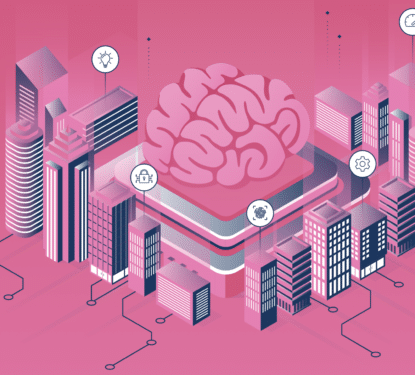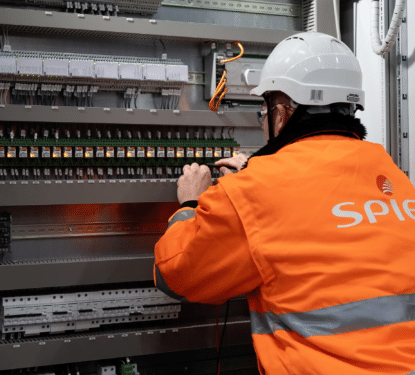As the COVID-19 outbreak continues, lockdowns keep almost half the world’s population at home, and people gradually accept the inevitable recession we are sliding into, many are looking to technology for answers.
Currently, building occupancy data can only show the true extent of lockdowns. However, in the future, the same data sets promise to help businesses get their employees back into the office safely and help them cut costs during the upcoming downturn. Now more than ever, buildings need visibility to understand how their spaces are being used and how they can adapt to the new environment they find themselves in.
Memoori spoke with Andrew Farah, CEO of California-based occupancy and space utilization analytics provider, Density Inc. about the impact of the global crisis, and what the future holds for businesses and their buildings.
Q: Doesn’t it seem strange that in this age of smart and human-centric technology, we have reverted to traditional methods such as old fashioned soap and social-distancing in our time of crisis? Is this a failure of smart buildings, shouldn’t we expect modern technology to offer a solution?
No. I don't think I would call it a failure. I think there are some circumstances coming out of this where technology assists in keeping people safe but predicting how to do this well, is a challenge. Short of putting thermal cameras in every building so you automatically know the temperature of people, or preventing access for those showing symptoms — I'm not sure if we’re going too far.
Going forward, I think that technology has this really interesting supporting role, a view shared by several of my senior leadership contacts in “household-name” fortune 10 companies. They're there, in their executive meetings, asking the question, how do we bring our employees back to work safely? And there's no ready answer.
There are a whole host of policies, technologies, and methods for bringing people back to work but, do you bring all of them back at the same time or in waves? Do you follow local requirements for shelter-in-place as your rubric, or do you create your own timeline? The one that we have been pulled into with Density is, how do you keep the headcount under a certain threshold to give all employees the opportunity to maintain social distancing. These are all questions that nobody has answers to and it's fascinating. I mean, maybe morbidly fascinating but it's fascinating.
I think how companies answer these types of questions will have long downstream impacts on what technologies they select. What employee data is readily available and whether or not we might start to see a “class system” inside the workplace — between people who have been sick and people who haven’t. I think it's very interesting to see how people think about their building as a space that is required to be safe coming out of this, and what they do to make it so.
Q: How do you see that playing out and what role can building occupancy data play in getting workers back into their offices?
Over the next 60 days or so, companies will want to answer that question. How long it takes to return is going to be dictated by regional shelter-in-place policies, which goes back to testing. As soon as you have pervasive testing, you can know which areas of the world or country or city are red zones and which are green zones. To bring employees back to the office, a city must be testing sufficiently so it can be designated as a green zone.
Those cities designated as green zones, because they're sufficiently testing to prove it, will be able to bring employees back to the office sooner. So, the local, state, and federal policy complexity is dictating and driving executive team discussion around what to do, which is more complex for a multinational with offices in many different countries. Then, you’ve got to decide who is non-essential personnel, or essential personnel, and who are critical employees. Could you imagine, for example, if GM brought their CEO back first?
There's a whole set of questions about who gets what type of treatment and, frankly, some of these executives have never worked from home in their life but they're probably going to be the last ones back to the office. I think it's fascinating and as far as I'm concerned, the fact that we have never truly measured the performance of one of our most valuable assets is one of the most surprising human oversights.
We’re talking to a lot of teams for our enterprise accounts they are all thinking, we should have really known this beforehand. They’re staring down the barrel of 25 million square feet of space, furloughs or layoffs of greater than a quarter of their workforce, and they have no idea, aside from blanket areas, which areas of buildings are actually used and which ones aren’t.
Q: And, in the longer-term, what can occupancy data do to support businesses through the seemingly inevitable recession?
I think that answer depends on your perspective on the recession. Whether it will be V-shaped and see us rocketing out, or if that bear market lasts longer. My sense is that it's going to be the latter. There are too many industries that are not just hibernating, they're essentially getting decimated. It is hard to say that we're just going to jump right back into a bull market.
The reason that I make that distinction, is that in a bull market there are all these questions around workplace experience. Like, are my employees productive? Are they using this type of space? Do they prefer that type of building? These are all popular concepts now. Workplace experience balloons as an incredibly important set of questions in a bull market. However, when there's a bear market those questions change into “where can we save cash?” As we move from a bull to a bear market, the typical purview of a team who's responsible for real estate shifts from productivity and so forth, to the consolidation of space.
Real estate is the second biggest cost for companies, after their payroll. So, if they want to preserve jobs, the focus will be on cutting the millions they're spending on their office space, occupancy analytics will help them determine which square footage is already vacant and should be cut. My belief is that we are in a bear market and it will continue for some time. As a result, every large corporation in the world is going to be looking at their real estate, to consolidate the space that they don't use and to invest in the space that they do.
Any sufficiently large player in a sufficiently large industry will have tens of millions, if not hundreds of millions of square feet of space. At that scale, there is simply no way that you can see how all of it is used in real-time, anecdotally. You just can't make decisions about 75 million square feet of space without actual data on its usage. So, if you're going to make a consequential decision, like shedding 15 million square feet of space or 40% of your real estate, you'll need a system that measures usage. That is the mid- to long-term occupancy data opportunity.
Q: Do you think the current mass remote working trial will show people the potential of remote and flexible work, and maybe even exacerbate the consolidation trends we expect to see in the downturn?
There’s a lot of prognostication on this point. I know of one multi-billion dollar company that is moving to a full and global work-from-home (WFH) policy after this crisis. They’re still going to have a major physical headquarters but they're going to shed something like eight offices. They will no longer think of WFH as a perk, it will be a standard for them, even in their headquarters, and the change is definitely a direct result of the COVID-19 crisis.

Q: Is that a company that “saw the light” when they were forced to go remote, or were they looking for an opportunity to go remote and here it is?
I think that's actually the fundamental question. Would they have done this anyway and the crisis is just accelerating their plans, or has this crisis changed their path? My guess is that it's probably a combination. Some were considering and now realize that remote work is the clear path and other organizations that are only now learning that they can actually do their work remotely.
We work with a number of companies who build hardware, and when this all started they thought, “there’s literally no way we can do our job without being in our labs.” Three weeks later and the same teams have built labs in their homes. Work is continuing and there's like a whole slew of teams that are like, “shit, this is possible, this is definitely possible. It's harder, it's less comfortable in some cases and more comfortable in others, but it's possible.”
WFH is an interesting debate, especially if you consider that companies working on two-floors are already doing a form of remote work. Most companies do remote work, they just don't admit it, and that's okay. I would say the more pressing matter is, how do you test and experiment with things now? So, when the inevitable resurgence of COVID comes in the fall, you've got a method and set of practices in place, that you can use to keep the business going. Frankly, that is more important, for most organizations, in my opinion.
It's inevitable that as the tools get better, people will feel closer and closer to one another, even without the physical contact. While the money spent traveling for in-person meetings may now seem unnecessary. So, I think organizations will adopt more remote work after this but it already felt like entropy — the trend towards more remote work was already happening, but maybe this accelerates it for some people, but it also frustrates others.
For many people, this experience of WFH is more influenced by the fact that their kids are not in school. So, rather than being able to sit quietly and work in their pajamas, the experience might actually be their six-year-old son in the background playing his new guitar and yelling at the top of his lungs because he thinks he's Mick Jagger. That group is thinking “WFH is hard” or “I hate working from home.” So, I expect a mix, some realizing how much they love remote work and others finding a new appreciation for the office.
What’s going to be really interesting is what these executive teams are gonna come up with as a policy. Is HR going to get a blank cheque to keep people safe? Will there be sets of employees that don’t show up because they now know they can WFH? Others may be unwilling to come back to the office out of fear of being unsafe — just as we've seen nurses who have quit their jobs because they didn't have PPE. If you have a family of five kids, office safety practices may be more important to you.
So, I think it's like it's sort of twofold. It's benevolent, in that you've got these executive teams that just want to keep their people safe but if they’re not really clear about policies, people may not come back at all, then what do the employers do? They can’t say “No, you can't WFH,” after they've already proven it’s possible. A whole new slew of new questions come up.
Q: The Density system has a unique way of counting people and recognizing activities without invading privacy. However, the Chinese government’s highly-invasive surveillance program has proved to be a very effective epidemic control system. Do you think its success, in this case, may change the Western stance towards surveillance?
The trade-off between security and safety is not a new debate. The best practical example maybe the FBI, when they asked Apple for access to a backdoor to people's iPhones, arguing that if they had surveillance access they could keep people safer. It was the same with the NSA, and I think the problem with this argument is that its too opaque. It's not clear how such surveillance keeps people safer and, more problematically, once there is access to that data, how are you going to stop it being abused and ensure that access stops when the problem is over?
You refer to China, an authoritarian country that does not care about privacy, it cares about growth. They did do a good job controlling COVID-19, but only because they can literally control all of their citizens through martial law at any moment. I don't want to live in a place like that. However, I also think it is unreasonable to assume that cameras have no place in our lives, especially in areas where there isn’t a reasonable expectation of privacy. While in places where there's a reasonable expectation of privacy you ought to have the freedom, once you're past security.
Some companies in the US have been placing cameras above desks to monitor employees, but those companies are essentially sub-selecting the employees who are willing to live with that — once employees realize that it's happening. I think it's more of a cultural issue than a policy issue, one that opens up a host of other questions like; what are we willing to accept? Do we really want photographs taken of our keyboards as we're typing in our passwords? And, will employees avoid the desks being monitored?
Q: We saw swine flu 10 years ago, which many say should have been our warning sign. If epidemics become more commonplace, every 10-years for example, what is the future potential of our occupancy data in the context of social-distancing for CRE?
I know you're asking for moonshots, but I should first say that I'm not an epidemiologist. I don't know how you prevent viruses in the future. However, I think sometimes there's pressure, especially with major events like 911 or big hacks like Target or Experian, which drives people to react by overcorrecting the problem. For a security issue, we may add four methods of authentication to be safer, for example, but then everyone's life gets worse.
In the context of social-distancing on a regular basis, I think there's still a likelihood we may end up doing that with some sets of subsystems after the COVID-19 crisis. We may overcorrect by making everyone wear different colored t-shirts depending on if you’re immune or not, for example. However, I think the more interesting outcome is to presume that the future already exists but it's just not evenly distributed.
Real estate is a $71 trillion asset globally. In the US alone, there are 10.9 billion square feet of leased or owned corporate real estate but as much as 4.4 billion of that is vacant and paid for. Every year, US corporations spend $250 billion on space with nobody in it, and it’s not that they don’t know they have this problem, they know. It is just that they can’t agree on which 41% is vacant paid for and which is actually being used. So they make decisions anecdotally.
Imagine you had perfect visibility into where all large groupings of humans were nationwide, outside of residential buildings and without invading privacy, for just one second. You just snap your fingers, you have access to that data, what would you do differently? My guess is that you'd have all sorts of new things that you could do. If there are clearly way too many people you may need to close it down, but where there's a lot of space you can move more people in that direction.
My point is that you should never build a space without knowing how it gets used, and I don't think that the answer is necessarily some magical new technology. I think that we now have an opportunity to look at physical space and try to understand what's missing. All these buildings talk about being “smart” but few understand how their space is used, so I think that's mostly marketing. I think true “intelligence” requires you to have a base layer of fundamental sets of data for visibility. I think the fluff technology that exists in the market is so substantial that it often drowns out the best solutions.
There's no way that I can tell how you avoid pandemics. I just think it would have been really nice, at the beginning of all this, to know how humans were using different spaces.



